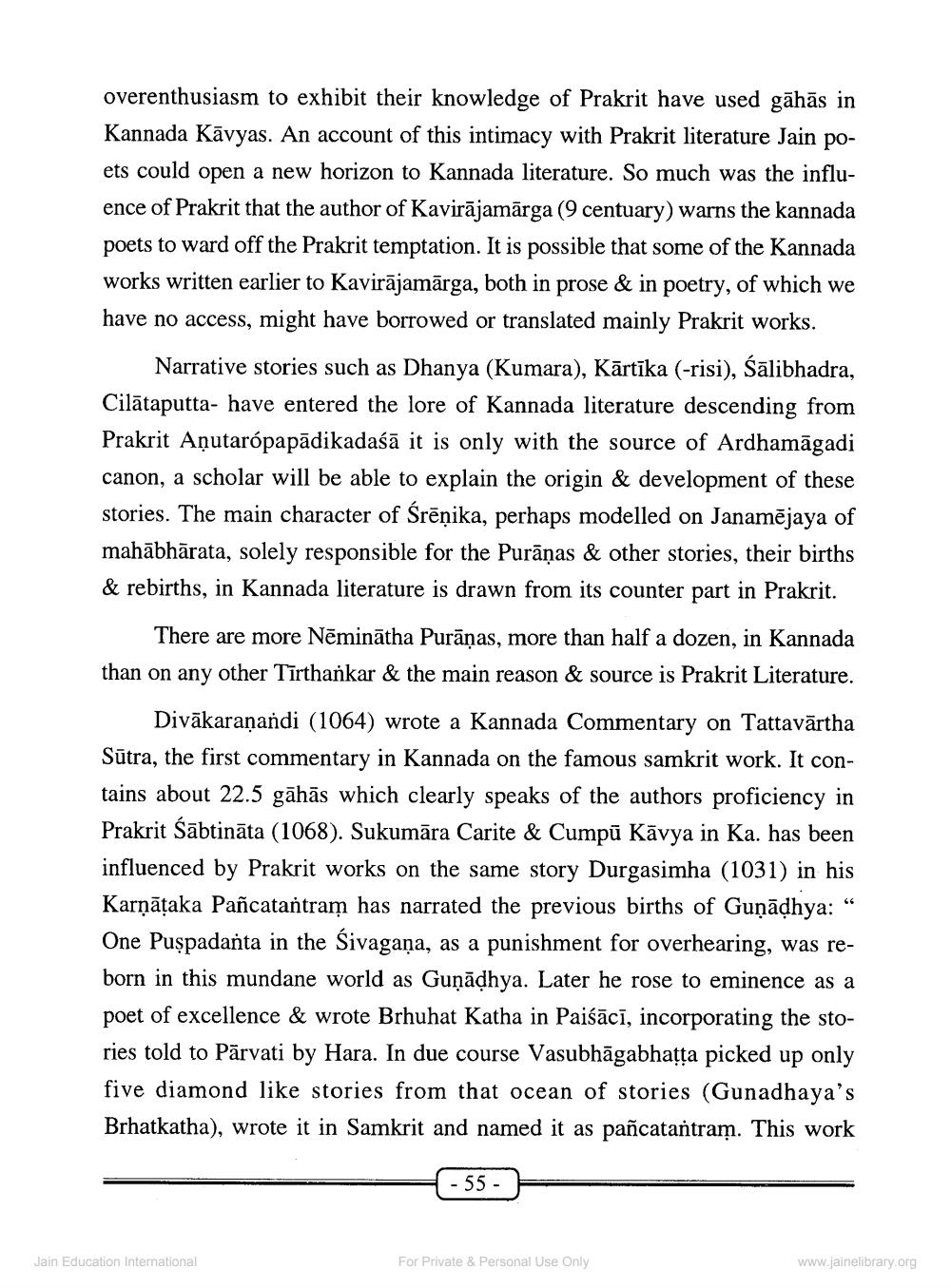________________
overenthusiasm to exhibit their knowledge of Prakrit have used gāhās in Kannada Kavyas. An account of this intimacy with Prakrit literature Jain poets could open a new horizon to Kannada literature. So much was the influence of Prakrit that the author of Kavirajamarga (9 centuary) warns the kannada poets to ward off the Prakrit temptation. It is possible that some of the Kannada works written earlier to Kavirajamarga, both in prose & in poetry, of which we have no access, might have borrowed or translated mainly Prakrit works.
Narrative stories such as Dhanya (Kumara), Kārtīka (-risi), Śālibhadra, Cilātaputta- have entered the lore of Kannada literature descending from Prakrit Anutarópapadikadaśā it is only with the source of Ardhamāgadi canon, a scholar will be able to explain the origin & development of these stories. The main character of Śrēņika, perhaps modelled on Janamejaya of mahabharata, solely responsible for the Purāņas & other stories, their births & rebirths, in Kannada literature is drawn from its counter part in Prakrit.
There are more Nēminātha Purāņas, more than half a dozen, in Kannada than on any other Tirthankar & the main reason & source is Prakrit Literature.
Divakaraṇandi (1064) wrote a Kannada Commentary on Tattavartha Sūtra, the first commentary in Kannada on the famous samkrit work. It contains about 22.5 gähas which clearly speaks of the authors proficiency in Prakrit Śābtināta (1068). Sukumāra Carite & Cumpu Kavya in Ka. has been influenced by Prakrit works on the same story Durgasimha (1031) in his Karṇāṭaka Pañcatantram has narrated the previous births of Guṇādhya: One Puspadanta in the Sivagana, as a punishment for overhearing, was reborn in this mundane world as Guṇāḍhya. Later he rose to eminence as a poet of excellence & wrote Brhuhat Katha in Paiśācī, incorporating the stories told to Parvati by Hara. In due course Vasubhāgabhaṭṭa picked up only five diamond like stories from that ocean of stories (Gunadhaya's Brhatkatha), wrote it in Samkrit and named it as pañcatantram. This work
Jain Education International
- 55
For Private & Personal Use Only
66
www.jainelibrary.org




